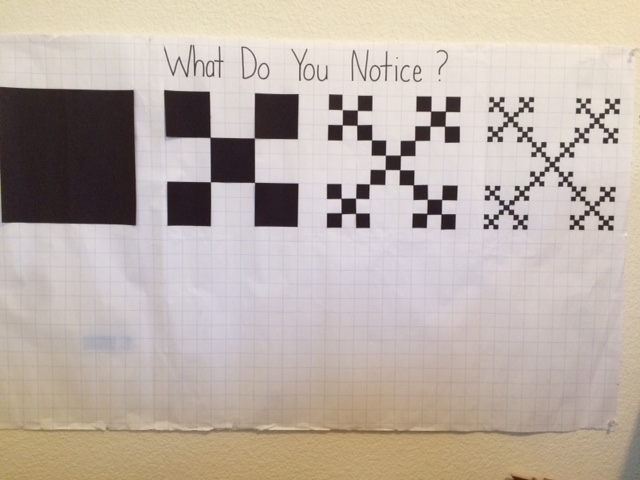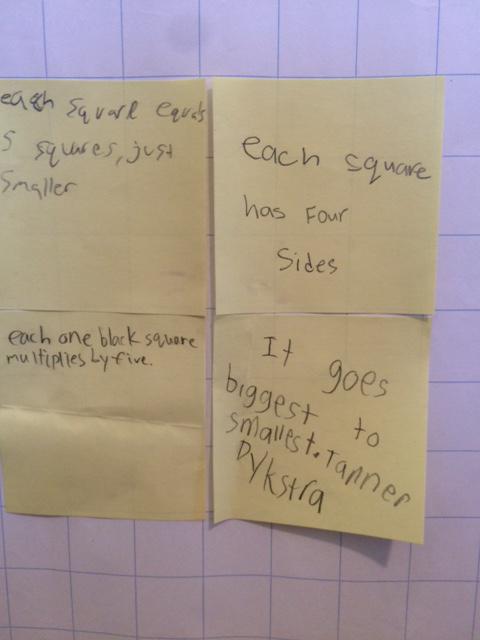
Primary students (K-2): patterns, shapes, geometry
Intermediate students (3-5): patterns, shapes, geometry, fractals
This pattern is an example of a fractal. A fractal is a geometric construction made up of patterns that are self-similar. These self-similar patterns are smaller replicas of the larger version.
Fractal Geometry: Benoit Mandlebrot is the father of fractal geometry and creator of a new study in mathematics called chaos theory. He discovered fractals in the early 1970s when he was studying the British coastline and realized that the larger coastline was made up of smaller and smaller versions of itself (self-similarity). He then began to notice this self-similarity in a lot of other areas: branches of trees, the path lightening takes as it makes its way toward the ground, broccoli, the leaves of ferns, etc. He realized that out of these seemingly chaotic and complex situations arose order, regularity and predictability. Out of that arose chaos theory - order from chaos.
But in his studies, Mandlebrot also discovered that fractals in nature are super efficient. For example, fractals allow plants to maximize exposure to sunlight. They also allow the cardiovascular system to deliver oxygen to different parts of the body in the most efficient way possible.

"Each square equals 5 squares, just smaller."
"Each square has four sides."
"Each one black square multiplies by 5."
"It goes biggest to smallest."